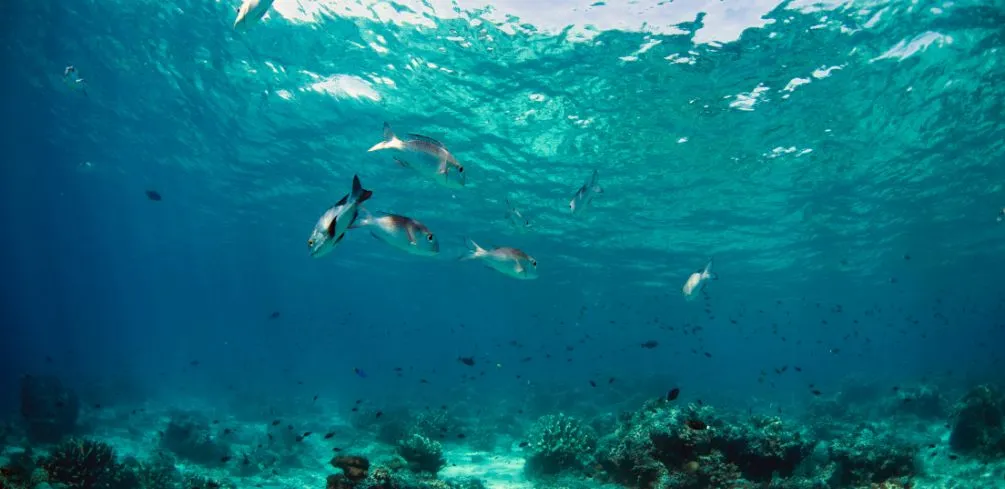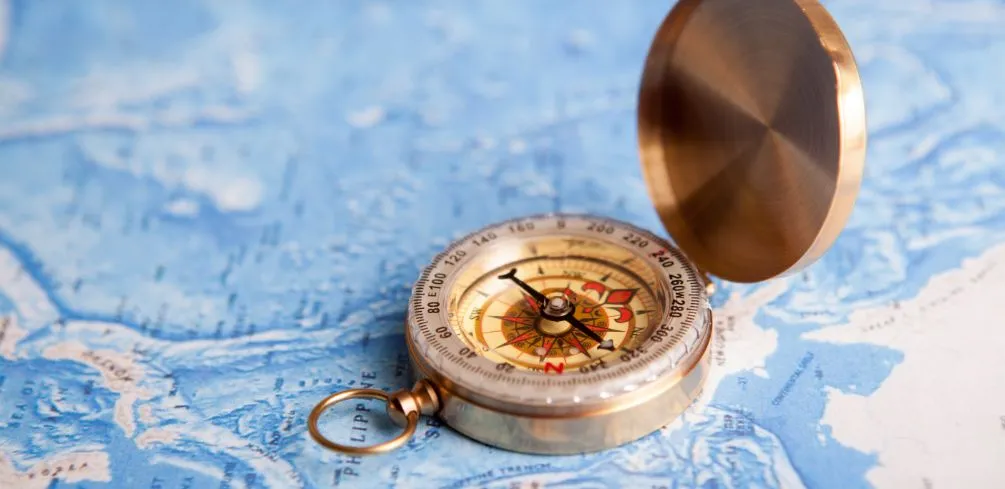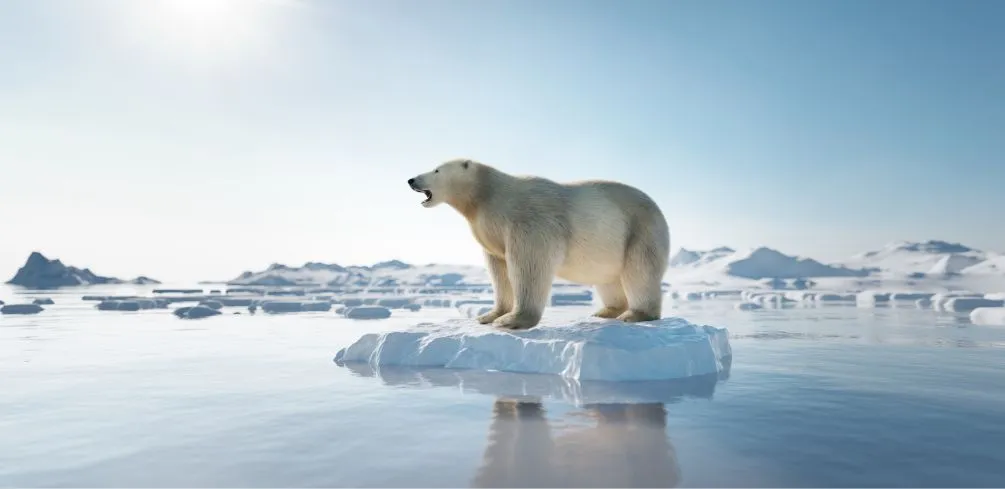Have you ever stopped to wonder how the temperature of the ocean affects marine life? From coral reefs to giant whales, understanding how temperature changes can impact the lives of marine animals is essential to preserving and protecting them. In this article, I’ll be exploring the effects of temperature variations on marine life and what we can do to help.
The world’s oceans play a crucial role in sustaining life on our planet. As temperatures increase or decrease due to climate change, it can have a devastating effect on the flora and fauna that inhabit these aquatic environments. From microscopic organisms to large mammals, changes in water temperature can have drastic consequences for sea creatures.
It’s not just about individual species either – entire ecosystems can be thrown out of balance when temperatures fluctuate too drastically. But with a better understanding of how temperature variations affect marine life, we might be able to find ways to protect them from harm.
Let’s take a closer look at how temperature changes are impacting our oceans and what we can do about it.
Definition Of Temperature Variations
Temperature variations are changes in the water temperature of an ocean or sea over time. The thermal fluctuations can be due to natural causes, such as seasonal changes, or from human-induced events like climate change.
Temperature ranges in the oceans and seas are typically measured in degrees Celsius (°C) and can range from below-freezing up to very high temperatures depending on the environment.
The consequences of temperature variations on marine life are a major issue today, with ocean warming being one of the major contributors to climate change. The rising temperatures caused by global warming impact marine species both directly and indirectly.
As waters become warmer, organisms must adapt or migrate to cooler areas in order to survive. This can disrupt food webs, put stress on entire ecosystems, and cause significant losses of biodiversity in some areas.
The effects of temperature variations on marine life have been greatly studied in recent years as researchers strive to identify effective conservation strategies for protecting fragile habitats and species that are affected by climate change.
It’s important that we understand how these changes affect our complex marine ecosystems so that we can work together toward finding solutions that will help maintain their health and stability for future generations.
Effects On Marine Ecosystems
The effects of temperature variations on marine ecosystems can be devastating. When temperatures shift, ocean organisms are put at risk for their survival. This impacts the balance of the entire ecosystem, as well as the species that live in it. In extreme cases, entire species may be wiped out due to the drastic changes in temperature.
Moreover, temperature shifts can also affect the behavior of certain marine species. For example, some fish migrate to cooler waters when temperatures become too warm, which could lead to an imbalance in food webs and cause disruption in local communities. Therefore, it’s important to take steps to ensure that these unpredictable temperature changes don’t negatively impact local populations of fish or other marine organisms.
Conservation efforts must be taken so that marine ecosystems remain healthy and resilient against future shifts in temperatures. This includes monitoring conditions in various areas and implementing methods such as restricting fishing during certain times of the year and establishing protected areas for vulnerable species.
By taking these steps we can ensure that ocean life is preserved and maintained for generations to come.
Effects On Marine Species
The ocean is a living organism that reacts to its environment, and temperature variations can have a profound effect on the creatures that inhabit it.
As temperatures rise and fall, marine species must adapt their behavior, migration patterns, reproduction cycles, and even mortality rates.
- Marine species adaptation: Many species of fish, invertebrates, and other organisms must adjust their behavior in order to survive when temperatures vary.
- Marine species behavior: Some species may move to cooler or deeper waters if temperatures become too extreme for them to survive.
- Marine species migration: Migration patterns can be disrupted as some species may move further north or south away from warming waters.
- Marine species reproduction: Changes in seasonal temperatures can also affect the reproductive cycles of many species, causing them to lay eggs earlier or later than usual or reducing the number of eggs laid overall.
In addition, temperature variations can lead to an increase in predation pressure for certain marine species as well as decreased food availability for others. These changes could ultimately lead to population declines and even extinctions.
It’s vitally important that we continue studying how temperature fluctuations impact marine life so that we can better protect our oceans and all its inhabitants.
Adaptations To Temperature Changes
As we’ve seen, temperature variations can have a drastic impact on marine life. But how do marine species adapt to these fluctuations in their environment? It’s all about the ability to survive and thrive in extreme temperatures.
First, let’s look at how different species respond to temperature changes. Some organisms may migrate to cooler or warmer waters, while others may seek shelter from the heat or cold. These behaviors help protect them from extreme temperatures, but only if they can find suitable habitats that provide the necessary resources for survival.
Additionally, some species are able to regulate their body temperatures through physiological adaptations such as metabolic rate changes and enzyme production adjustments.
Finally, other species are more resilient and can tolerate wider ranges of water temperatures than most other organisms. They have evolved special traits that allow them to survive even in extreme conditions, such as thermal tolerance and osmoregulation processes.
For example, jellyfish and sea turtles have adapted to living in both warm and cold waters by regulating their internal body temperature and using behavioral strategies like moving between deeper or shallower depths of the ocean.
The ability of marine life to adapt to changing environmental conditions is essential for their survival—and understanding how different species cope with temperature variations is an essential part of protecting our oceans’ delicate ecosystems.
Conservation Strategies
The ocean’s temperature is a vital factor in the health of marine life, and its conservation is paramount for its continued existence. When temperatures become too hot or cold, it can cause catastrophic consequences for many species. As such, it’s important to ensure that various strategies are in place to conserve the temperature variations of our oceans.
One way to protect these delicate ecosystems is through marine conservation efforts. This includes reducing human activities that contribute to climate change and other environmental factors that can affect the ocean’s temperature.
Plus, establishing protected areas within certain parts of the ocean will help preserve its temperature as well as provide sanctuary for endangered species. By focusing on sustainable fishing practices and limiting pollution, we can reduce the impact of human activities on marine life and its environment.
Ultimately, conserving our oceans’ temperature variations will allow us to continue enjoying its bounty while protecting its inhabitants from potential harm. We must take steps now to ensure that future generations can experience the beauty of our planet’s marine life without having to worry about catastrophic impacts from extreme temperatures.
Conservation efforts are essential if we are going to protect this fragile balance and ensure the long-term health of our oceans and all their creatures.
Frequently Asked Questions
What Is The Global Impact Of Temperature Variations On Marine Life?
I’m sure most of us have heard of global warming and how it affects the environment and marine life, but what is the global impact of temperature variations on marine life? The ocean is a vast ecosystem with many different species that are all affected by changes in temperature.
From coral reefs to sea turtles and whales, even small changes in ocean temperatures can have a huge impact on these creatures.
Climate change, caused primarily by an increase in greenhouse gases, has had a significant effect on ocean temperatures. As the planet gets warmer due to human activity, so does the ocean.
This increases the acidity of the water and can cause major shifts in the populations of certain species. In addition to this, higher temperatures also disrupt natural cycles like spawning and migration patterns.
Here are three ways that rising ocean temperatures affect marine life:
- Ocean acidification: Higher levels of carbon dioxide dissolved in seawater reduce its pH level and make it more acidic, which can be harmful to some species.
- Loss of habitat: Warmer waters can lead to coral bleaching, which destroys coral reef habitats, leaving entire ecosystems without food or shelter for their inhabitants.
- Migration patterns: Temperature changes also influence migration patterns as animals move towards cooler waters in search of suitable habitats for reproduction and growth.
These effects all lead to a decrease in biodiversity and population levels for certain species which ultimately affects the health and stability of our oceans as a whole.
Rising temperatures also mean less oxygen for fish, making it harder for them to survive; this could potentially lead to lower catches for fishermen who depend on them as their livelihoods. It’s clear that we must take steps to reduce climate change if we want to protect our oceans and ensure their continued health into the future.
How Can We Measure Temperature Variations In The Ocean?
Measuring temperature variations in the ocean can be a complex but crucial task when it comes to an understanding how temperature impacts marine life. To get an accurate picture of how temperature affects the ocean, we need to measure not only the average temperature of the ocean surface but also its fluctuations over time.
By measuring temperature variations in the ocean, we can gain insights into how changes in temperatures affect different species and their habitats.
When we measure marine temperature, we’re looking at a range of factors such as water depth, seasonality, and regional differences. Temperature data helps us understand how various species interact with each other and their environment.
This can give us a better understanding of how global climate change is impacting marine life. It can also help us identify areas that may be more vulnerable to higher temperatures or more prone to extreme weather events such as hurricanes or tropical storms.
Temperature measurements are essential for predicting future changes in ocean ecosystems and informing our decisions about conservation initiatives. Measuring temperature variations gives us a powerful tool to understand complex relationships between species, climates, and habitats – one that goes beyond simply looking at surface-level observations.
With this information, we can ensure that our efforts to protect oceanic environments are taking into account all the complexities of our changing climate.
What Are The Economic Implications Of Temperature Variations On Marine Life?
Temperature variations in the ocean can have serious economic implications for marine life. As temperatures rise and fall, certain species may become extinct or migrate to new habitats, while others may thrive. This can have a major impact on fisheries and other industries that rely on the health of marine ecosystems.
The effects of temperature fluctuations on marine life are far-reaching. For example, some species may be more vulnerable to rising temperatures than others. This could lead to decreased populations of certain species, which can cause disruption in fisheries and tourism industries that depend on them. Additionally, changes in ocean temperature can alter the migration patterns of fish and other marine life, resulting in changes in their distribution and abundance.
To understand how temperature variations are impacting marine life, it’s important to look at how we measure ocean temperature:
Ocean Temperature Measurement:
- In situ measurements: These include methods such as using buoys or thermometers dropped into the water column from ships or planes.
- Remote sensing techniques: These involve measuring radiation emitted by the sea surface using satellites or aircraft.
These tools give us insight into both local and global patterns of ocean temperature variation, allowing us to better understand how climate change is affecting our oceans – and, ultimately, our economies – today. Additionally, understanding how different types of marine species respond to these changes is key for developing policies that help protect our oceans for future generations.
When it comes to protecting our environment and our livelihoods, monitoring and understanding the impacts of temperature variations on marine ecosystems is essential – not just now but also long into the future. By taking steps to measure these changes accurately, we can ensure that we remain informed about the effects climate change has on our planet’s most valuable resources – its people and its wildlife.
What Are The Most Vulnerable Species To Temperature Variations?
We all know that the ocean is a vast and mysterious world of its own, full of amazing marine species. But what happens when the temperature of the ocean changes? It can have a major impact on some of these species, making them vulnerable to the effects of climate change. That’s why it’s important to understand what are the most vulnerable species to temperature variations in order for us to better protect them.
When it comes to marine life, some species are more sensitive to changes in temperature than others. This means that when ocean temperatures increase or decrease, certain creatures will be affected more than others.
For example, some fish may be unable to survive in warmer waters while other animals may be unable to find food in colder ones. Coral reefs are also highly sensitive and can easily suffer from bleaching if water temperatures exceed certain thresholds.
It’s clear that there are many factors at play when it comes to determining which marine species are most vulnerable to temperature variations. These include physical traits such as size and body shape, as well as habits like migration patterns. It is also worth noting that some species may not even realize they’re being impacted by changing temperatures until it’s too late – making them especially susceptible.
Ultimately, understanding which marine species are most vulnerable to temperature variations can help us take steps toward protecting them from further harm due to climate change. From creating protected areas for coral reefs and other sensitive habitats to promoting sustainable fishing practices, we can all do our part in ensuring that these creatures remain safe and healthy for future generations.
Are There Any Effective Strategies To Protect Marine Species From Temperature Variations?
Temperature variations can have drastic impacts on marine life, which is why it’s important to consider strategies for protecting species from these changes. In this article, I’m going to explore the various ways ocean temperature variations can be addressed and what strategies are available for marine species protection.
When assessing marine temperature protection, we should first consider how climate change is influencing ocean temperatures and the different ways that species are impacted by these variations. For example, coral bleaching has been linked to warmer ocean waters and can result in major losses of biodiversity. Other marine life may suffer from reduced habitat quality or increased competition as a result of changing temperatures.
Fortunately, there are a number of effective strategies that could be implemented to protect marine species from temperature fluctuations:
- Implementing conservation measures such as Marine Protected Areas (MPAs)
- Educating stakeholders about the importance of environmental stewardship
- Enhancing research efforts to better understand how temperature variations impact species
- Adopting sustainable fishing techniques like catch-and-release fishing
Taking action on these fronts could help us better manage ocean temperature fluctuations and protect vulnerable marine life.
Of course, this is only part of the equation; it’s also important to reduce emissions and other activities contributing to climate change in order to prevent further warming in our oceans. But now more than ever, it’s essential that we act quickly if we want to safeguard our marine ecosystems for future generations.
Conclusion
The impact of temperature variations on marine life is a complex and pressing issue. From the effects on vulnerable species to the economic implications, it is clear that this problem requires urgent attention. We must ask ourselves: How much longer can we allow climate change to continue unchecked before its effects become irreversible?
It is important that we take action now to protect our oceans. We must create strategies to monitor and mitigate the effects of temperature variations on marine life, such as protecting vulnerable species or implementing conservation measures in key regions. We must also work together to reduce global emissions and tackle climate change at its source.
Ultimately, it is up to us to ensure that our oceans remain healthy for generations to come. By taking proactive steps now, we can protect marine life from the destructive impacts of temperature variations. Let’s work together to safeguard our oceans – before it’s too late!





